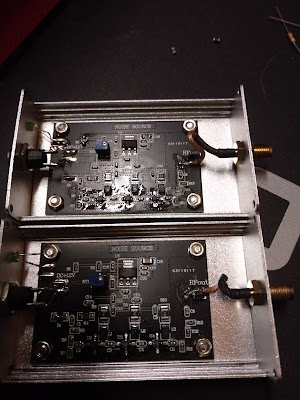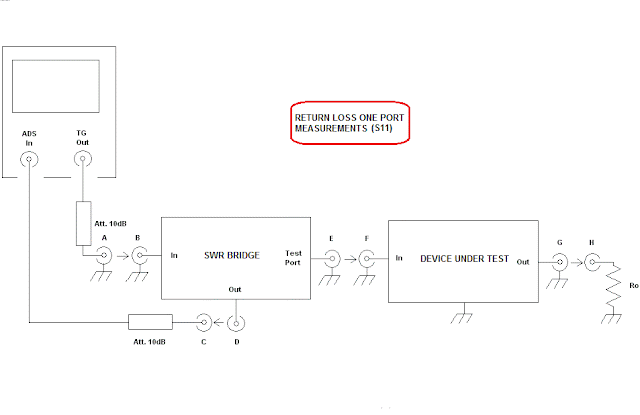An odissey with some low cost noise generators

Recently I have bought five noise generators rated from 0.2 to 2000 MHz . After a quick check I have realized that no one of them worked correctly or at all , all of them with common problems of designing and/or building , and other with also additional problems ( loss of components , bad soldering , cables broken during constructions .... I supposed no one was really tested . This was a start of the odissey ..... Checking the basic circuits is is made by a noise diode polarized with an LM317 with variable voltage with a trimmer , a 3 dB attenuator , a cascade of three monolitic amplifiers and another 3 dB attenuator . The first hardware generated noise , while the second didn't because the output cable was cut in the middle after having rolling it while screwing the SMA till the cable broke into two pieces ! What you see is the module after repair ( you can note that the cable is shorter because I used the cut part remaining connected to the SMA connector ) . In the first mod





